-
Executive Summary
-
Market Introduction
-
Market Definition
-
Scope of the Study
-
List of Assumptions
-
Markets Structure
-
Market Research Methodology
-
Research Process
-
Primary Research
-
Secondary Research
-
Market Size Estimation
-
Forecast Model
-
Market Dynamics of the Global Dyestuff Market
-
Introduction
-
Drivers
-
Restraints
-
Opportunities
-
Challenges
-
Trends/Technology
-
Market Factor Analysis of the Global Dyestuff Market
-
Supply Chain Analysis
- Raw Material Suppliers
- Manufacturers/Producers
- Distributors/Retailers/Wholesalers/E-Commerce
- End Users
-
Porter’s Five Forces Analysis
- Threat of New Entrants
- Bargaining Power of Buyers
- Bargaining Power of Suppliers
- Threat of Substitutes
- Intensity of Competitive Rivalry
-
Pricing Analysis
-
Global Dyestuff Market, by Form
-
Introduction
-
Natural
- Market Estimates & Forecast, 2020-2027
- Market Estimates & Forecast, by Region, 2020-2027
-
Synthetic
- Market Estimates & Forecast, 2020-2027
- Market Estimates & Forecast, by Region, 2020-2027
-
Global Dyestuff Market, by Composition
-
Introduction
-
Organic
- Market Estimates & Forecast, 2020-2027
- Market Estimates & Forecast, by Region, 2020-2027
-
Inorganic
- Market Estimates & Forecast, 2020-2027
- Market Estimates & Forecast, by Region, 2020-2027
-
Global Dyestuff Market, by Process
-
Introduction
-
Disperse Dye
- Market Estimates & Forecast, 2020-2027
- Market Estimates & Forecast, by Region, 2020-2027
-
Direct Dye
- Market Estimates & Forecast, 2020-2027
- Market Estimates & Forecast, by Region, 2020-2027
-
Reactive Dye
- Market Estimates & Forecast, 2020-2027
- Market Estimates & Forecast, by Region, 2020-2027
-
Vat Dye
- Market Estimates & Forecast, 2020-2027
- Market Estimates & Forecast, by Region, 2020-2027
-
Acid Dye
- Market Estimates & Forecast, 2020-2027
- Market Estimates & Forecast, by Region, 2020-2027
-
Others
- Market Estimates & Forecast, 2020-2027
- Market Estimates & Forecast, by Region, 2020-2027
-
Global Dyestuff Market, by Types
-
Introduction
-
Azo Dyes
- Market Estimates & Forecast, 2020-2027
- Market Estimates & Forecast, by Region, 2020-2027
-
Cyanine Dyes
- Market Estimates & Forecast, 2020-2027
- Market Estimates & Forecast, by Region, 2020-2027
-
Nitroso Dyes
- Market Estimates & Forecast, 2020-2027
- Market Estimates & Forecast, by Region, 2020-2027
-
Anthraquinone Dyes
- Market Estimates & Forecast, 2020-2027
- Market Estimates & Forecast, by Region, 2020-2027
-
Others
- Market Estimates & Forecast, 2020-2027
- Market Estimates & Forecast, by Region, 2020-2027
-
Global Dyestuff Market, by Application
-
Introduction
-
Textile
- Market Estimates & Forecast, 2020-2027
- Market Estimates & Forecast, by Region, 2020-2027
-
Leather
- Market Estimates & Forecast, 2020-2027
- Market Estimates & Forecast, by Region, 2020-2027
-
Paper
- Market Estimates & Forecast, 2020-2027
- Market Estimates & Forecast, by Region, 2020-2027
-
Wood
- Market Estimates & Forecast, 2020-2027
- Market Estimates & Forecast, by Region, 2020-2027
-
Others
- Market Estimates & Forecast, 2020-2027
- Market Estimates & Forecast, by Region, 2020-2027
-
Global Dyestuff Market, by Region
-
Introduction
-
North America
- Market Estimates & Forecast, 2020-2027
- Market Estimates & Forecast, by Form, 2020-2027
- Market Estimates & Forecast, by Composition, 2020-2027
- Market Estimates & Forecast, by Process, 2020-2027
- Market Estimates & Forecast, by Types, 2020-2027
- Market Estimates & Forecast, by Application, 2020-2027
- US
- Canada
-
Europe
- Market Estimates & Forecast, 2020-2027
- Market Estimates & Forecast, by Form 2020-2027
- Market Estimates & Forecast, by Composition, 2020-2027
- Market Estimates & Forecast, by Process, 2020-2027
- Market Estimates & Forecast, by Types, 2020-2027
- Market Estimates & Forecast, by Application, 2020-2027
- Germany
- France
- Italy
- Spain
- UK
- Russia
- Poland
- Rest of Europe
-
Asia-Pacific
- Market Estimates & Forecast, 2020-2027
- Market Estimates & Forecast, by Form, 2020-2027
- Market Estimates & Forecast, by Composition, 2020-2027
- Market Estimates & Forecast, by Process, 2020-2027
- Market Estimates & Forecast, by Types, 2020-2027
- Market Estimates & Forecast, by Application, 2020-2027
- China
- India
- Japan
- Australia & New Zealand
- Rest of Asia-Pacific
-
Middle East & Africa
- Market Estimates & Forecast, 2020-2027
- Market Estimates & Forecast, by Form, 2020-2027
- Market Estimates & Forecast, by Composition, 2020-2027
- Market Estimates & Forecast, by Process, 2020-2027
- Market Estimates & Forecast, by Types, 2020-2027
- Market Estimates & Forecast, by Application, 2020-2027
- GCC
- Israel
- North Africa
- Turkey
- Rest of Middle East & Africa
-
Latin America
- Market Estimates & Forecast, 2020-2027
- Market Estimates & Forecast, by Form, 2020-2027
- Market Estimates & Forecast, by Composition, 2020-2027
- Market Estimates & Forecast, by Process, 2020-2027
- Market Estimates & Forecast, by Types, 2020-2027
- Market Estimates & Forecast, by Application, 2020-2027
- Brazil
- Mexico
- Argentina
- Rest of Latin America
-
Company Landscape
-
Introduction
-
Market Strategy
-
Key Development Analysis (Expansions/Mergers & Acquisitions/Joint Ventures/New Product Developments/Agreements/Investments)
-
Company Profiles
-
Clariant
- Company Overview
- Financial Updates
- Product/Business Segment Overview
- Key Strategies
- Key Developments
- SWOT Analysis
-
LANXESS
- Company Overview
- Financial Updates
- Product/Business Segment Overview
- Key Strategies
- Key Developments
- SWOT Analysis
-
BASF SE
- Company Overview
- Financial Updates
- Product/Business Segment Overview
- Key Strategies
- Key Developments
- SWOT Analysis
-
Orion Colorchem Industries
- Company Overview
- Financial Updates
- Product/Business Segment Overview
- Key Strategies
- Key Developments
- SWOT Analysis
-
SETAŞ
- Company Overview
- Financial Updates
- Product/Business Segment Overview
- Key Strategies
- Key Developments
- SWOT Analysis
-
Synthesia, a.s.
- Company Overview
- Financial Updates
- Product/Business Segment Overview
- Key Strategies
- Key Developments
- SWOT Analysis
-
Kyung-In Synthetic Corporation
- Company Overview
- Financial Updates
- Product/Business Segment Overview
- Key Strategies
- Key Developments
- SWOT Analysis
-
Avocet Dye & Chemical Co. Ltd
- Company Overview
- Financial Updates
- Product/Business Segment Overview
- Key Strategies
- Key Developments
- SWOT Analysis
-
Arkema SA
- Company Overview
- Financial Updates
- Product/Business Segment Overview
- Key Strategies
- Key Developments
- SWOT Analysis
-
Huntsman Corporation
- Company Overview
- Financial Updates
- Product/Business Segment Overview
- Key Strategies
- Key Developments
- SWOT Analysis
-
Conclusion
-
LIST OF TABLES
-
Global Dyestuff Market, by Region, 2020-2027
-
North America: Dyestuff Market, by Country, 2020-2027
-
Europe: Dyestuff Market, by Country, 2020-2027
-
Asia-Pacific: Dyestuff Market, by Country, 2020-2027
-
Middle East & Africa: Dyestuff Market, by Country, 2020-2027
-
Latin America: Dyestuff Market, by Country, 2020-2027
-
Global Dyestuff by Form Market, by Regions, 2020-2027
-
North America: Dyestuff by Form Market, by Country, 2020-2027
-
Europe: Dyestuff by Form Market, by Country, 2020-2027
-
Table10 Asia-Pacific: Dyestuff by Form Market, by Country, 2020-2027
-
Table11 Middle East & Africa: Dyestuff by Form Market, by Country, 2020-2027
-
Table12 Latin America: Dyestuff by Form Market, by Country, 2020-2027
-
Table13 Global Dyestuff Composition Market, by Regions, 2020-2027
-
Table14 North America: Dyestuff Composition Market, by Country, 2020-2027
-
Table15 Europe: Dyestuff Composition Market, by Country, 2020-2027
-
Table16 Asia-Pacific: Dyestuff Composition Market, by Country, 2020-2027
-
Table17 Middle East & Africa: Dyestuff Composition Market, by Country, 2020-2027
-
Table18 Latin America: Dyestuff Composition Market, by Country, 2020-2027
-
Table19 Global Dyestuff Process Market, by Regions, 2020-2027
-
Table20 North America: Dyestuff Process Market, by Country, 2020-2027
-
Table21 Europe: Dyestuff Process Market, by Country, 2020-2027
-
Table22 Asia-Pacific: Dyestuff Process Market, by Country, 2020-2027
-
Table23 Middle East & Africa: Dyestuff Process Market, by Country, 2020-2027
-
Table24 Latin America: Dyestuff Process Market, by Country, 2020-2027
-
Global Dyestuff Types Market, by Regions, 2020-2027
-
North America: Dyestuff Types Market, by Country, 2020-2027
-
Europe: Dyestuff Types Market: by Country, 2020-2027
-
Asia-Pacific: Dyestuff Types Market: by Country, 2020-2027
-
Middle East & Africa: Dyestuff Types Market: by Country, 2020-2027
-
Latin America: Dyestuff Types Market: by Country, 2020-2027
-
Global Dyestuff Application Market: by Country, 2020-2027
-
North America: Dyestuff Application Market: by Country, 2020-2027
-
Europe: Dyestuff Application Market: by Country, 2020-2027
-
Asia-Pacific: Dyestuff Application Market: by Country, 2020-2027
-
Middle East & Africa: Dyestuff Application Market: by Country, 2020-2027
-
Latin America: Dyestuff Application Market: by Country, 2020-2027
-
Global Form Market, by Region, 2020-2027
-
Global Composition Market, by Region, 2020-2027
-
Global Process Market, by Region, 2020-2027
-
Global Types Market, by Region, 2020-2027
-
Global Application, by Region, 2020-2027
-
North America: Dyestuff Market, by Country
-
North America: Dyestuff Market, by Form
-
North America: Dyestuff Market, by Composition
-
North America: Dyestuff Market, by Process
-
North America: Dyestuff Market, by Types
-
North America: Dyestuff Market, by Application
-
Europe: Dyestuff Market, by Country
-
Europe: Dyestuff Market, by Form
-
Europe: Dyestuff Market, by Composition
-
Europe: Dyestuff Market, by Process
-
Europe: Dyestuff Market, by Types
-
Europe: Dyestuff Market, by Application
-
Asia-Pacific: Dyestuff Market, by Country
-
Asia-Pacific: Dyestuff Market, by Form
-
Asia-Pacific: Dyestuff Market, by Composition
-
Asia-Pacific: Dyestuff Market, by Process
-
Asia-Pacific: Dyestuff Market, by Types
-
Asia-Pacific: Dyestuff Market, by Application
-
Middle East & Africa: Dyestuff Market, by Country
-
Middle East & Africa: Dyestuff Market, by Form
-
Middle East & Africa: Dyestuff Market, by Composition
-
Middle East & Africa: Dyestuff Market, by Process
-
Middle East & Africa: Dyestuff Market, by Types
-
Middle East & Africa: Dyestuff Market, by Application
-
Latin America: Dyestuff Market, by Country
-
Latin America: Dyestuff Market, by Form
-
Latin America: Dyestuff Market, by Composition
-
Latin America: Dyestuff Market, by Process
-
Latin America: Dyestuff Market, by Types
-
Latin America: Dyestuff Market, by Application
-
LIST OF FIGURES
-
Global Dyestuff Market Segmentation
-
Forecast Research Methodology
-
Five Forces Analysis of the Global Dyestuff Market
-
Value Chain of the Global Dyestuff Market
-
Share of Global Dyestuff Market in 2020, by Country (%)
-
Global Dyestuff Market, 2020-2027,
-
Global Dyestuff Market Size, by Form, 2020
-
Share of the Global Dyestuff Market, by Form, 2020-2027
-
Global Dyestuff Market Size, by Composition, 2020
-
Share of the Global Dyestuff Market, by Composition, 2020-2027
-
Global Dyestuff Market Size, by Process, 2020
-
Share of the Global Dyestuff Market, by Process, 2020-2027
-
Figure13 Global Dyestuff Market Size, by Types, 2020
-
Share of the Global Dyestuff Market, by Types, 2020-2027
-
Global Dyestuff Market Size, by Application, 2020
-
Share of the Global Dyestuff Market, by Application, 2020-2027

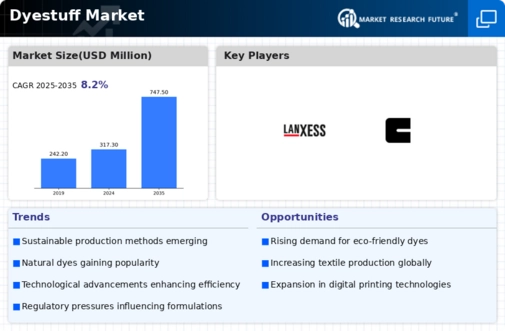

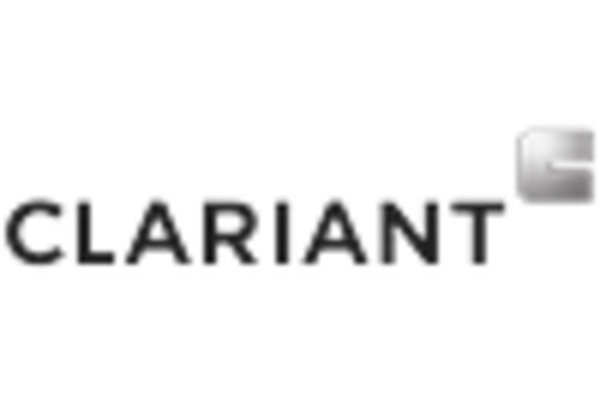
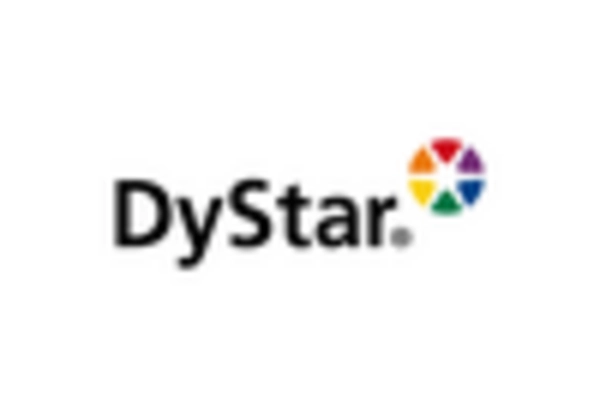

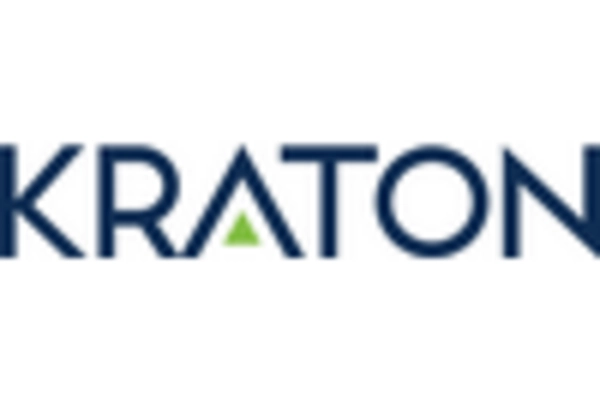
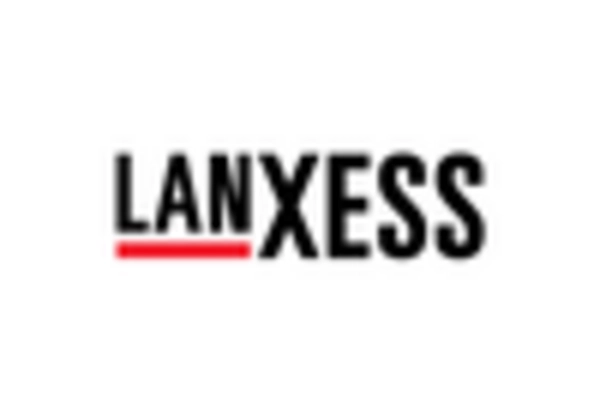









Leave a Comment